For those entrenched in the world of SEO, the concept of site taxonomy is likely familiar, as it pertains to the organization and structure of websites. When we talk about a website’s taxonomy, we’re essentially referring to its hierarchical structure and how easily users can navigate through its content.Paying attention to your site’s taxonomy is crucial for SEO professionals because it not only dictates the overall organizational layout but also influences how search engines like Google perceive and index your site, as well as how users interact with it.
Understanding Site Taxonomy:
Understanding Site Taxonomy:

When we discuss taxonomy, we’re essentially referring to a classification system that governs how content is organized and categorized within a website. This classification is based on semantic characteristics and the relationships between different elements of content.Your website’s taxonomy plays a significant role in how Google crawls and indexes your site, as well as how users navigate through its content. A well-structured taxonomy can positively impact search engine rankings and user experience.
Taxonomies vs. URL Structure:
Taxonomies: Taxonomies categorize and group similar content on a website, facilitating efficient organization and navigation for users. They create a logical structure by grouping related content into categories and subcategories based on semantic relationships.
For instance, a blog website may utilize a taxonomy to categorize articles into topics such as “technology,” “health,” or “travel.” Within each category, further subcategories or tags may be used to classify content more granularly.
URL Structure: On the other hand, the URL structure provides a hierarchical representation of the website’s pages and their relationships. It reflects the organization of content within the website’s taxonomy, indicating how pages are nested within categories and subcategories.
For example, a URL might follow the pattern of “domain.com/category/subcategory/page,” where the hierarchy illustrates the relationship between different levels of content.
Importance and Benefits:
1. Improved Navigation: Both taxonomies and URL structures contribute to enhancing website navigation and user experience. By organizing content logically and hierarchically, users can easily find and access relevant information, leading to a more seamless browsing experience.
2. Enhanced SEO: A well-structured taxonomy and URL hierarchy can benefit search engine optimization (SEO) efforts. Clear categorization and organization make it easier for search engine crawlers to index and understand the website’s content, potentially leading to higher visibility and rankings in search results.
3. Increased Engagement: An intuitive taxonomy and URL structure can encourage users to explore more content on the website, leading to increased engagement and time spent on the site. By guiding users through a structured navigation path, you can enhance user satisfaction and retention.
Types of Taxonomies:
1. Hierarchical Taxonomies:

Hierarchical taxonomies organize content in a tree-like structure, with categories and subcategories arranged in a hierarchical manner. They are commonly used in various contexts, such as e-commerce websites, content management systems, and online libraries.
2. Faceted Taxonomies:
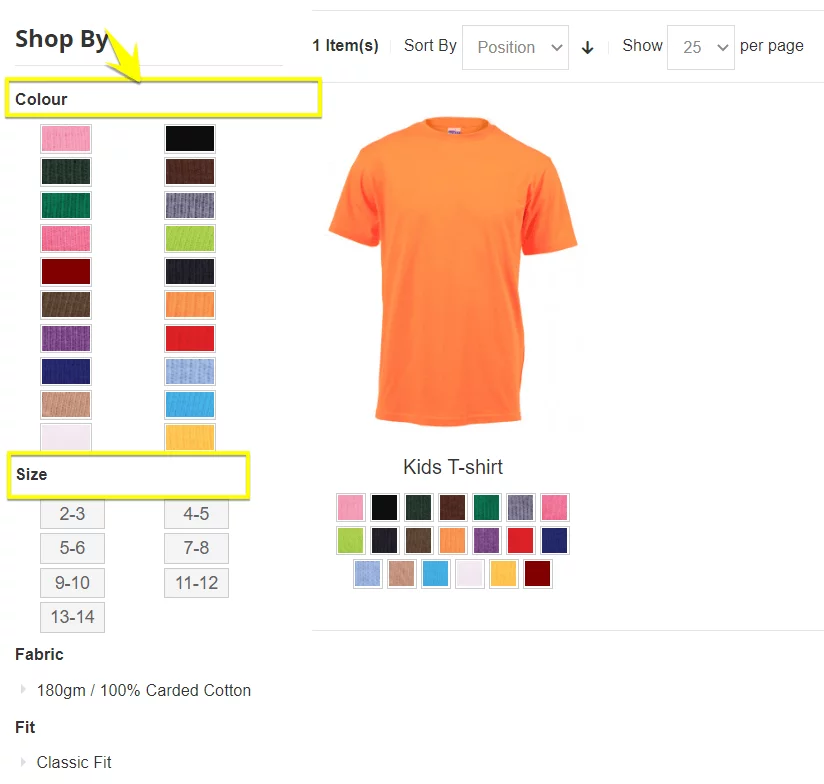
Faceted taxonomies allow users to filter and navigate content based on multiple attributes or facets. They are particularly useful for websites with a large amount of data or products, enabling users to refine their search results according to specific criteria such as size, color, price, etc.
3. Network Taxonomies:
Network taxonomies categorize and classify network components and devices based on their characteristics and functions. They provide a structured approach to network design, management, and troubleshooting, aiding in efficient network administration and security.
Strategies to Optimize SEO Taxonomy:
A. Conduct keyword research
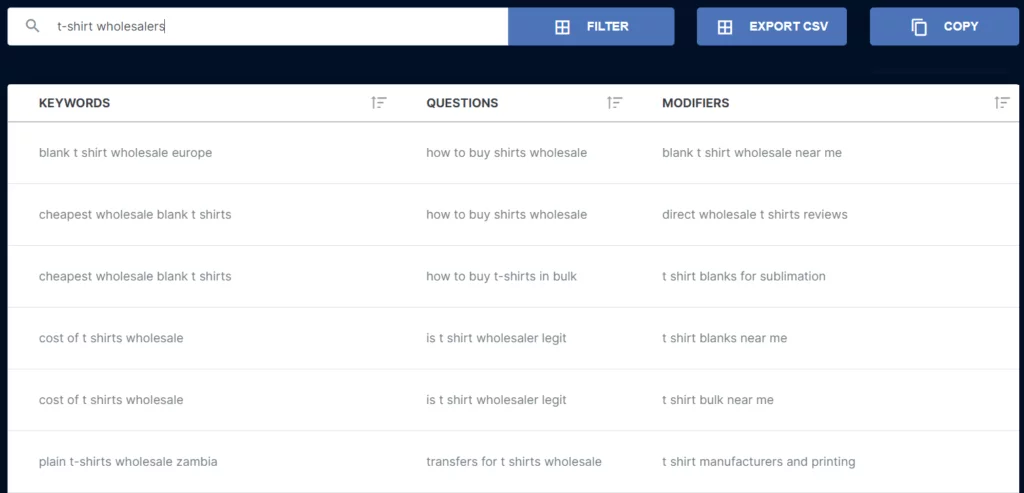
Begin by conducting comprehensive keyword research as the initial phase of implementing SEO taxonomy. This entails using tools to pinpoint relevant keywords that attract substantial internet traffic, aligning with your target audience’s search behavior.
By leveraging KeywordsFX, you gain insights into the specific keywords your audience is actively searching for, guiding your taxonomy strategy effectively.
This preliminary step holds paramount importance as it lays the groundwork for structuring and organizing your taxonomy. By categorizing related keywords and establishing a hierarchical framework, you facilitate search engine comprehension and crawling processes. Consequently, this optimization enhances your website’s search rankings and overall visibility in search engine results.
B. Organize your content
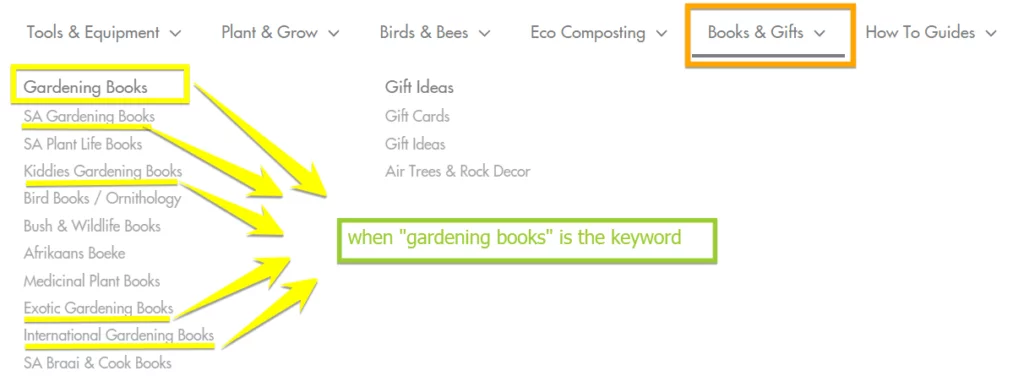
Once you’ve conducted thorough keyword research and identified the most relevant keywords for your website, the next crucial step in implementing SEO taxonomy is to organize your website’s content into categories and subcategories. This strategic organization creates a clear and structured taxonomy optimized for SEO, enhancing both user experience and search engine visibility.
To begin, you can create a comprehensive site map or navigation menu that reflects the hierarchy of your taxonomy. This hierarchical structure should align closely with the keywords you’ve identified, ensuring that each category and subcategory corresponds to relevant search terms.
For instance, if your website focuses on gardening, you might group related keywords like “gardening books” into a distinct category within your taxonomy. This categorization not only helps users navigate your site more efficiently but also enables search engines to better interpret and index your content, ultimately improving your site’s search rankings.
By organizing your content into categories and subcategories, you create a logical framework that guides users through your website’s offerings. This structured approach enhances the overall user experience, making it easier for visitors to find the information they’re seeking and encouraging them to explore further.
Moreover, a well-organized taxonomy can also reveal gaps in your content and highlight opportunities for new pages or blog posts. By identifying areas where additional content is needed, you can strategically expand your website to address the diverse interests and preferences of your audience.
C. Integrate keywords
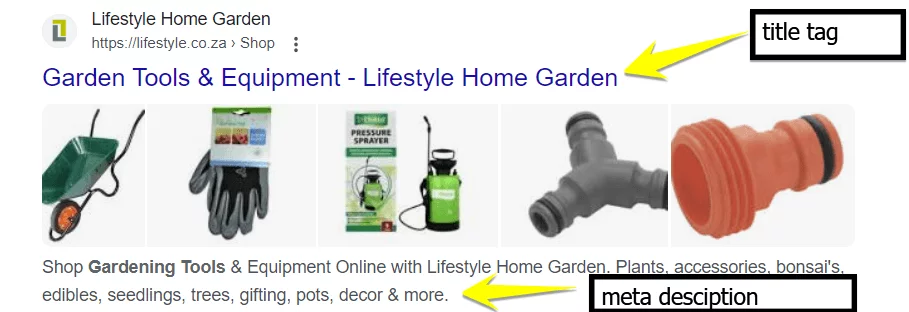
Once you’ve established your categories and subcategories, the next step is to incorporate your target keywords into their metadata. This includes optimizing page titles, descriptions, and image alt tags with relevant keywords to further enhance your SEO efforts.
For example, if your keyword is “flower gardening,” you can create a category titled “flower gardening tools” and optimize its metadata accordingly. Your SEO title tag could be “Flower Gardening Supplies and Tools – Buy Online at [Your Website Name],” while the meta description tag might read, “Find everything you need for successful flower gardening at [Your Website Name]. Shop our selection of tools, supplies, and more today.”
By integrating relevant keywords into your metadata, you provide search engines with valuable context about the content of your website. This helps improve search engine visibility and increases the likelihood of your site appearing in search results for relevant queries. Ultimately, this can lead to higher click-through rates (CTRs) and more conversions for your business, driving overall success and growth.
D. Add internal and external links

To enhance the effectiveness of your SEO taxonomy, it’s crucial to add internal and external links within your categories and subcategories. By incorporating these links, you not only facilitate search engine understanding of your website’s hierarchy but also improve user experience and credibility.
For instance, if your website focuses on gardening and includes a category like “vegetable gardening,” you can strategically add internal links to relevant blog posts within that category. These could cover topics like companion planting or soil preparation, providing users with additional valuable information while reinforcing the thematic relevance of your content.
Learn about internal links here.
Moreover, including external links to reputable sources such as gardening forums or seed suppliers further enriches the user experience and demonstrates to search engines the authority and relevance of your website within its niche.
By doing so, you create a network of interconnected content that guides users through their exploration of your website while sending positive signals to search engines about its value and credibility.
E. Monitor the progress
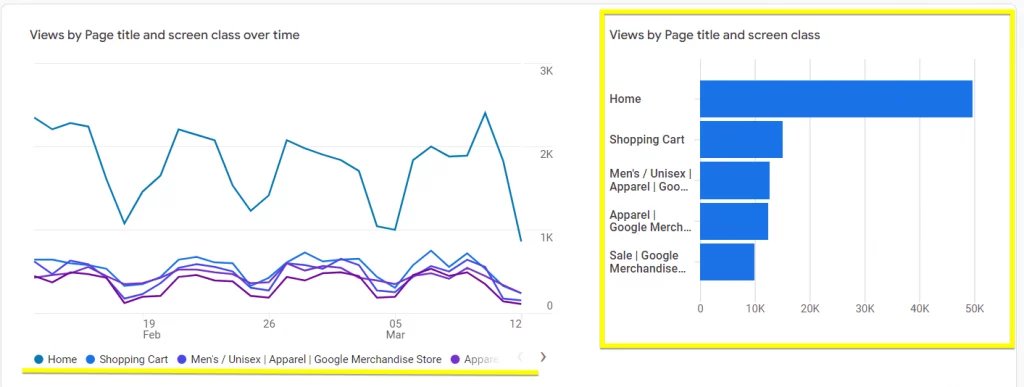
Another essential aspect of maintaining an effective SEO taxonomy is tracking its traffic and search engine ranking. Utilizing tools like Google Analytics allows you to monitor the performance of your taxonomies over time, gaining valuable insights into user behavior and search engine visibility.
Regular analysis of this data enables you to identify areas for improvement and adjust your keyword strategy accordingly. For example, you may discover that certain keywords drive more traffic and conversions than others, prompting you to prioritize those terms in your optimization efforts.
Additionally, tracking user search queries can reveal gaps in your taxonomy, prompting you to create new categories or tags to better organize your content and improve discoverability.
Staying abreast of the latest trends and changes in search algorithms is also crucial for maintaining a competitive edge in SEO. By remaining vigilant and adapting your strategies to evolving search landscape, you can ensure continued success and growth for your website.
What constitutes a successful SEO taxonomy?
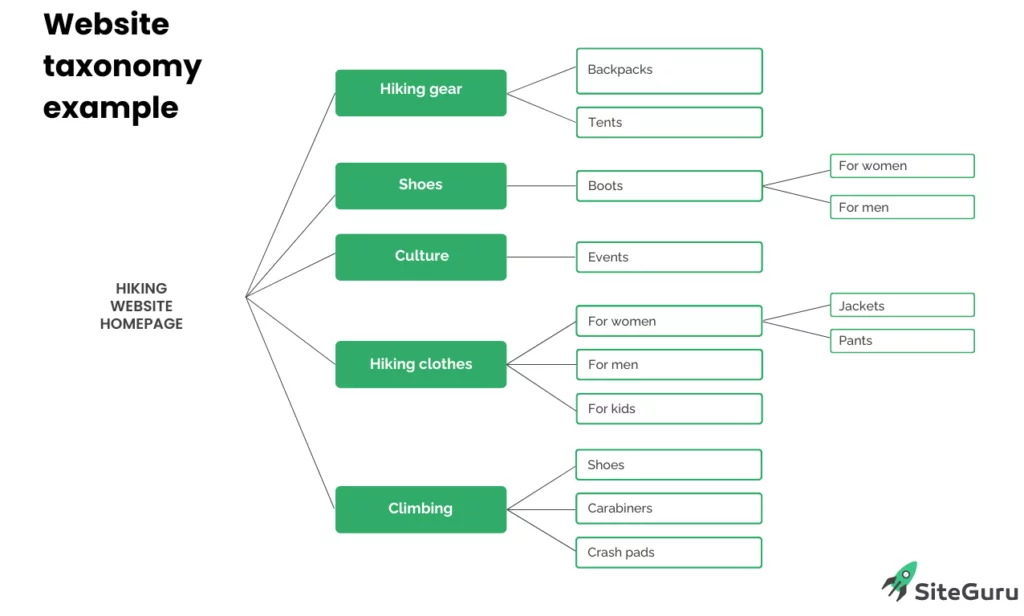
Picture it as a meticulously crafted jigsaw puzzle, where each piece seamlessly fits to create a cohesive and effective website optimization strategy. Let’s delve into the core elements that make up this puzzle and explore how they cater to both SEO requirements and user needs.
- Clear Hierarchical Structure:
Hierarchy is paramount, benefiting both users and search engine bots. A well-organized structure enhances user experience and boosts search result rankings. Think of it like a well-indexed file cabinet, where broad categories lead to more specific subjects or items. Establishing clear categories sets the foundation for easy navigation and content exploration.
- Descriptive Labels & Titles:
Precision is key when labeling categories and pages. Clear and descriptive labels help users navigate effortlessly and assist search engines in understanding content context. Avoid vague or generic labels and opt for specific terms that accurately represent the topic they apply to. This clarity enhances search relevance and aids in efficient content discovery.
- Optimized URL Structures:
The relationship between taxonomy and URL structure is intimate. Your URL taxonomy should mirror your site’s organizational hierarchy, guiding users and search engines alike. For instance, a URL like website.com/shoes/men/skateboarding signifies:
- The domain structure (website.com/)
- Subfolders (/shoes/men/)
- Page identity (/skateboarding)
This alignment between URL structure and taxonomy facilitates intuitive navigation and predicts page content, contributing to effective SEO taxonomy implementation.
- Internal Linking Strategy:
While focusing on external backlinks is common, internal linking plays a vital role in optimizing URL relevance and authority distribution. Internal links guide users between relevant pages, enhance site navigation, and boost link equity across your website. Strategically placed internal links provide context to search engines, reinforcing topic connections and improving page discoverability.
- Balancing User-Centric and SEO-Focused Taxonomy:
Successful taxonomy strikes a balance between catering to user needs and aligning with SEO objectives. The user-centric approach involves understanding audience behavior, gathering feedback, and tailoring taxonomy to enhance user satisfaction and drive sales. Conversely, the SEO-focused approach optimizes for search engine algorithms, targeting keywords and boosting visibility.
To achieve synergy between these approaches:
- Name categories using user-friendly language while incorporating relevant keywords.
- Build website structure around user demands while ensuring SEO-friendliness.
- Combine user behavior metrics with search engine ranking reports to refine strategies and maximize effectiveness.
Real Life Examples of Good SEO Taxonomy:
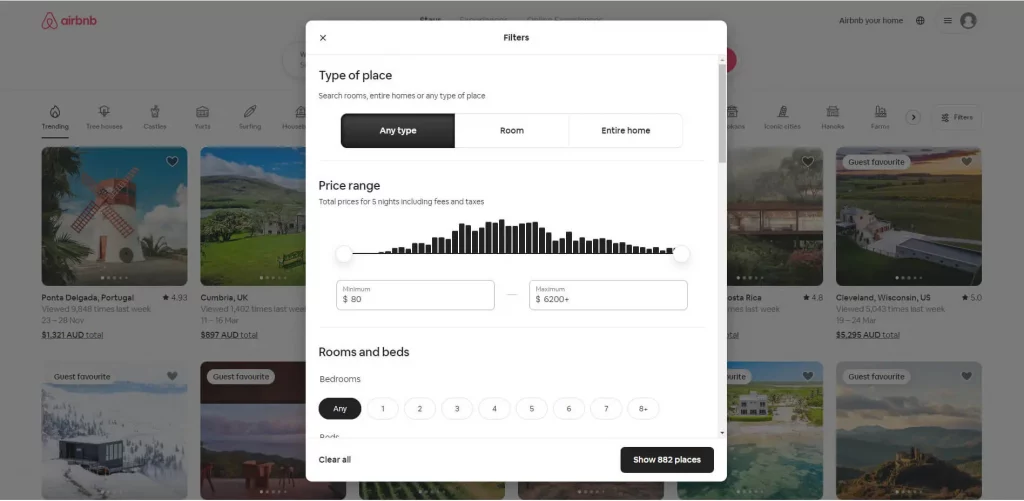
Key Features:
- Straightforward Logic: Airbnb’s taxonomy follows a simple and intuitive logic, allowing users to navigate effortlessly between categories like “Amazing Views” and “Treehouses”.
- Filtering Options: Users can easily filter options based on various factors such as price range, type of place, room, bed, and more.
Airbnb’s taxonomy is designed to provide users with a seamless browsing experience. By organizing listings into clear categories and offering intuitive filtering options, Airbnb ensures that users can quickly find the accommodation that best fits their preferences and needs.
- Spotify:
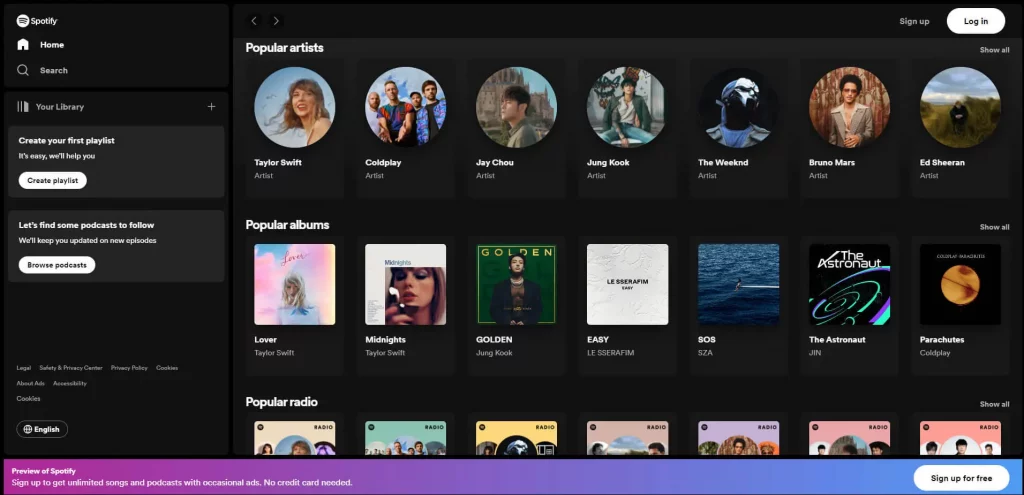
Key Features:
- User Preference-Based Categorization: Spotify’s categorization system relies heavily on user preferences, offering a vast library of interconnected music genres.
- Effortless Music Discovery: Users can easily discover new music tailored to their mood or activity, whether it’s focusing, working out, or relaxing.
Spotify’s taxonomy is built to enhance music discovery for its users. By categorizing music based on user preferences and activities, Spotify makes it easy for users to explore new artists and genres seamlessly.
- Zappos:
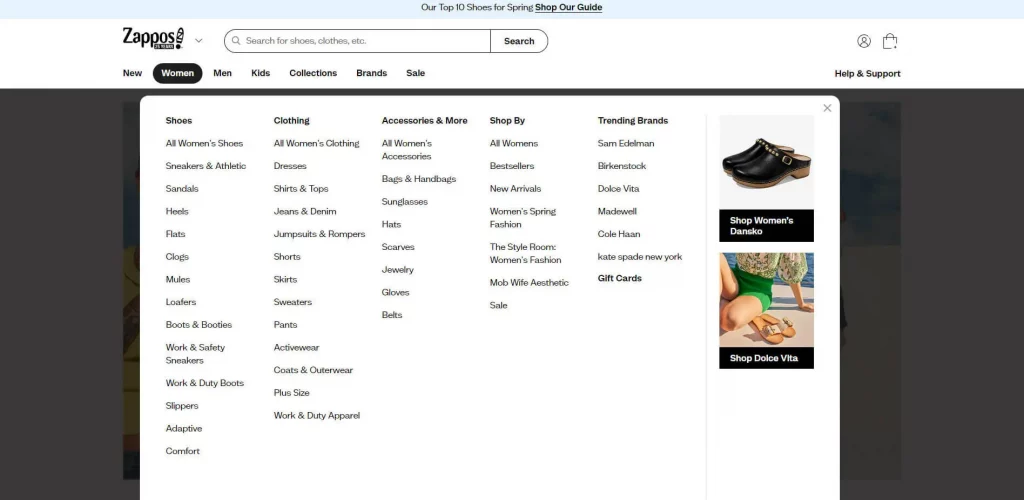
Key Features:
- Hierarchical Taxonomy: Zappos employs a hierarchical taxonomy, with main categories highlighted on the navigation menu for easy access.
- Faceted Filtering: Users can narrow down their search for products by various attributes such as width, subcategory, brand, color, features, and shoe weight.
Zappos’ taxonomy and filtering system are designed to streamline the shopping experience for users. By offering a hierarchical taxonomy and faceted filtering options, Zappos ensures that users can quickly find the products they’re looking for with ease.
- National Geographic:

Key Features:
- Robust Taxonomy: National Geographic’s taxonomy is comprehensive, allowing users to explore topics like science or history through articles, films, and photo stories.
- Immersive Experience: Each category unfolds into more specific subcategories, providing users with an immersive browsing experience.
National Geographic’s taxonomy is curated to provide users with a rich and immersive exploration of various topics. By organizing content into detailed categories and subcategories, National Geographic ensures that users can delve deep into their areas of interest with ease.
Conclusion:
In conclusion, implementing a successful SEO taxonomy is essential for improving website visibility, user experience, and search engine rankings. A well-structured taxonomy enhances navigation, helps search engines understand the context of content, and improves overall site organization. By incorporating clear hierarchical structures, descriptive labels, optimized URL structures, internal linking strategies, and striking a balance between user-centric and SEO-focused approaches, websites can effectively optimize their taxonomy for both users and search engines.
FAQs on SEO Taxonomy:
What are some common mistakes to avoid when implementing SEO taxonomy?
Some common mistakes to avoid when implementing SEO taxonomy include using vague or generic labels, creating overly complex hierarchies, neglecting to optimize URL structures, and failing to incorporate internal linking strategies. It’s important to strike a balance between user needs and SEO requirements and to regularly monitor and adjust your taxonomy based on performance data and feedback.
How can I measure the effectiveness of my SEO taxonomy?
You can measure the effectiveness of your SEO taxonomy by tracking key performance indicators such as website traffic, search engine rankings, bounce rates, time on site, and conversion rates. Additionally, you can use tools like Google Analytics, Google Search Console, and other SEO analytics platforms to monitor user behavior, keyword performance, and overall site visibility. Regularly analyzing this data can help you identify areas for improvement and optimize your taxonomy for better results.



